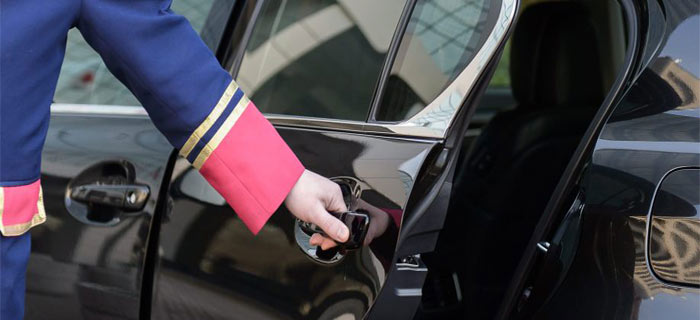
Welcome to the Door Zone. Come Inside! By STMicroelectronics

Cars electronics are evolving at an incredible pace. We can read something new about autonomous vehicles, car electrification or vehicle connectivity almost every day. With all of this, however, car doors are often ignored, and you could be forgiven for thinking that outside of power window and locks, they are devoid of high-tech electronics. Well think again. Welcome to the Door Zone, which while not quite the Twilight Zone does hide some technology secrets.
The humble car door has quite a history of technology. Let’s start with the obvious one: door locks. We’ll bet you don’t know when the first power door locks were introduced. Take a guess (the answer is at the bottom of this post).
From then on, car makers introduced evolutions including central locking, keypad locking, keyless locking, remote locking and automatic door locking at certain speeds. Today, you can open your car via an NFC-equipped Smartphone. Each of these advances added more and more analog and digital electrical and then electronic components and DC motors into the Door Zone.
And electric power windows? Another innovative American manufacturer, Packard, introduced the first power windows in 1940. Ford and Cadillac soon followed. From single windows to all windows; from one control per window to multiple controls (usually for the driver); from electro-hydraulic power to high-torque electric motors; from no safety features to the ability to auto-sense obstructions. The evolution of the power window has moved in lockstep with the complexity of the electrical and electronic controls.
Rear- and side-view mirrors have also evolved through the door zone. Rear-view mirrors have been around from the early 1900s. The side-view or wing mirror was considered an option until the 1960s and 70s. Interestingly, side-view mirrors connected to the door remained manually adjustable until relatively recently. Now, making the mirrors electrically adjustable, auto-levelling, and foldable-on-parking requires electric motors and drivers–and all this is common. It is also commonplace for the mirrors to be heated in winter, with rapid defrost modes. These require higher currents and power electronics.
High-end car models now incorporate electrochromic (EC) glass in their mirrors. EC glass with auto-dimming features can reduce the glare caused by vehicle headlights from behind, an important safety measure as the brightness of headlight technology improves too. Car makers are adding cameras, too, replacing or augmenting the read-view mirror with an LCD screen linked to a rear-facing camera. More features, more electronics!
Lighting in the Door Zone is also important. On the outside of the door and most notably on the side-view mirrors, manufacturers are incorporating turn-signal lighting. On the inside of the door, switches need to be illuminated. More efficient LEDs are replacing incandescent bulbs, lowering cost, power consumption, and waste.
Of course, the automobile industry is very focused on waste and not just of the solid kind. Emissions and power consumption are a big target for elimination from both consumers and manufacturers. Electric vehicles’ practicality and popularity are accelerating. Minimizing electronic components and the use of efficient low-power designs for controlling the Door Zone are definitely the way forward.
Whether powered by battery or traditional internal combustion engine, a car’s Door Zone has become a complex and technology-packed part of each vehicle. The car, therefore, needs to implement effective networking solutions, manage analog and digital signals well, properly drive DC motors, actuate solenoids, and operate diverse lighting configurations, and manage energy and safety requirements reliably.
To provide manufacturers and consumers with the options and comfort required in the Door Zone, ST has a wide range of drivers. The latest in the family is the L99DZ100G/GP for front-door applications and L99DZ120 for rear-door controls. These unique single-chip solutions have LIN and CAN networking capability that can wake up Electronic Control Units (ECU) when needed to save power. They can also deliver power, up to 7.5A of current from the built-in half-bridge and high-side drivers. They can drive up to 5 DC motors, incorporate a gate driver for mirror heating, and make available a specific module for controlling electrochromic glass. Advanced Lighting options are included, with two bulb drivers and eight LED drivers available per chip.
The Door Zone is moving out of the Twilight and at ST, we are playing our part.
For further information about the L99DZ1’s please visit www.st.com/l99dz1
